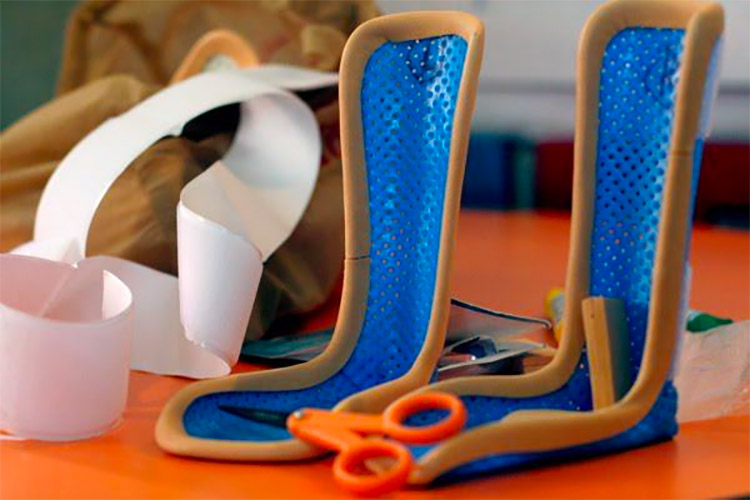
Last Updated 11 July 2019
Can you replace your existing Assistive Technology?
What happens when your child outgrows their orthotics? Or your wheelchair just dies of old age?
The NDIA will help you replace your existing assistive technology without the need for a detailed assessment in certain situations.
Existing AT can be replaced without a new AT assessment if:
- it costs more than $1,500 and less than $15,000
- it is damaged (not as a result of misuse or neglect). For example, general wear and tear of a manual wheelchair, such as significant stretching and sagging of the back rest and seat.
- it is no longer in good working condition and cannot be repaired. For example, a Hi-Lo bed that can no longer be height adjusted for carers to tend to personal care tasks.
- it is close to, or has reached the end of its service life. For example, your wheelchair was supplied a number of years ago (more than 5 years old) and it isn’t suitable to continue to repair the item.
- it is no longer an appropriate size. For example, a child has outgrown their current shower commode and there is now a requirement for them to be remeasured.
- has a surface area that has worn down or changed and is now unsafe and at risk of causing a pressure injury. For example specialised seating, prosthetic socket.
NOTE: A new AT assessment may be required, when:
- it is actually a new piece of AT that is being requested
- the replacement AT is complex and needs significant customisation
- there are a number of factors to support a new AT assessment
- the participant has communication difficulties, a cognitive impairment or limited access to informal supports
What supporting documents do I need to provide?
During your planning meeting, you will be asked to provide at least one document from each of the following 3 criteria:
1) Evidence that you are already using the AT you want to replace
The participant needs to prove that they have previously been supplied with this AT item and should show how old it is and its service history (if applicable). The document should include the participant’s name if possible.
Examples:
- Tax invoice, receipt or purchase order
- Order confirmation letter or issue document from a state/territory service provider
- Repair history from a repairer including a report stating the current item is in a condition beyond repair
2) Evidence of no change to functional capacity
Information that shows there has been no significant change to the participant’s functional capacity or no expected change to future functional capacity.
Examples:
- An existing AT assessment report (within 2 years), which provides information about the participant’s current and future functional capacity relevant to the replacement item
- A report from a suitably qualified practitioner confirming there has been no significant changes in the participant’s function or well-being in the last 12 months, or expected in following 12 months (this could be your GP).
3) Evidence of the cost of replacement AT
Information that shows the cost of the requested replacement AT support. Generally, replacement AT above $15,000 will require detailed evidence, including assessment by a suitably qualified AT assessor if the NDIA deems it necessary.
Examples:
- A single quote is required to confirm the cost of the item.
- Quote aligns with the specifications of the existing AT.
What is the price limit for replacement AT?
The process above generally applies to replacement AT that costs between $1,500 and $15,000.
Lower cost items (less than $1500) can be replaced using funding from your Daily Adaptive Equipment funding (now being renamed 'Low Cost AT' funding). See page 4 of the Assistive Technology and Consumables Guide 2019 for these line items.
Items greater than $15,000 may be considered for replacement AT on a case by case basis, however they normally become more complex and may require you to have a current AT assessment.
Will I need to provide the National Disability Insurance Agency (NDIA) with a quote?
Yes, you will be required to provide the NDIA with a quote for your replacement Assistive Technology, or a price to supply from a state/territory AT program.
If you have provided the NDIA with a quote for your AT within the last three (3) months for AT that you have not yet received, you will not be required to provide another quote. The amount of time that a quote is valid for often varies between providers. If you are unsure whether you may need a new quote, have a chat with your NDIS planner or Local Area Coordinator (LAC).
How long will it take for my replacement AT equipment to be approved?
Your NDIS planner or LAC will include funding in your NDIS plan. Once your plan is approved, you will be able to purchase or source your replacement assistive technology from your preferred supplier.
What happens if I need help buying, setting up or learning to use my replacement AT?
Your AT supplier may provide some setup or training help and this would be included in their quote for replacement.
If you need help from an AT Assesor or expert to select, buy and set up, or to use your replacement assistive technology correctly, you will have funding in your NDIS plan which you can use specifically for AT training or support. You will find this in the Capacity Building part of your plan (Improved Daily Living).
MyCareSpace Resources on Assistive Technology
- Everything you need to know about Assistive Technology
- What Assistive Technology is funded by the NDIS?
- What are the different Levels of Assistive Technology?
- How do I buy Assistive Technology?
- When do I need an NDIS Assistive Technology Assessment and Quote?
- Who pays for repairs to Assistive Technology
- Replacing NDIS Assistive Technology
Sources:
NDIS THERAPY FINDER - FREE SERVICE
LET US FIND YOU A SKILLED SUPPORT WORKER

